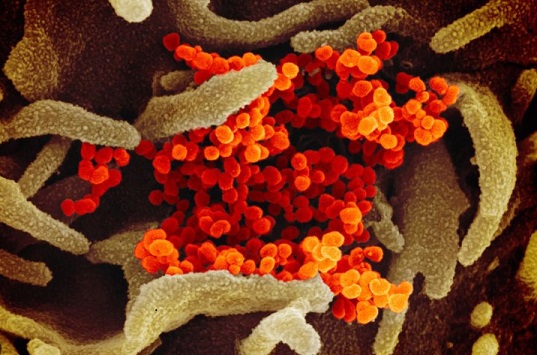Nikhil Prasad Fact checked by:Thailand Medical News Team Nov 01, 2025 2 hours, 49 minutes ago
Medical News: Researchers Identify HGS Vesicles as Crucial Coronavirus Assembly Hubs
A collaborative discovery from The First Affiliated Hospital of Guangzhou Medical University, Guangzhou National Laboratory, and the Institute of Biophysics at the Chinese Academy of Sciences has revealed where coronaviruses actually assemble inside infected cells. The study provides crucial insight into how SARS-CoV-2 and related viruses hijack human cellular machinery during the later stages of infection, potentially paving the way for future antiviral therapies.
 Hidden Cellular Factories Where SARS-CoV-2 Multiply Discovered
Hidden Cellular Factories Where SARS-CoV-2 Multiply Discovered
In this
Medical News report, scientists used advanced imaging tools like super-resolution microscopy, electron microscopy, and cryogenic correlated light and electron microscopy (cryo-CLEM) to visualize viral construction sites inside cells. They discovered that the protein known as Hepatocyte Growth Factor-Regulated Tyrosine Kinase Substrate (HGS) forms enlarged vesicular compartments during infection. These “HGS-positive” structures become the main assembly platforms for new coronavirus particles once the infection progresses beyond the initial replication phase.
How the Virus Builds Inside the Host
The researchers found that after coronaviruses invade a cell and replicate their genetic material, they need new “factories” to assemble fresh virions before release. At this later stage, the usual cell structures such as the Golgi apparatus and ERGIC (endoplasmic reticulum-Golgi intermediate compartment) become fragmented or insufficient for mass production. In response, the virus manipulates HGS to form large bubble-like vesicles where viral structural proteins—including the spike (S), membrane (M), and nucleocapsid (N)—gather and assemble into mature virions.
Live-cell imaging showed that these vesicles act as real-time virus factories. Viral proteins were observed clustering around and fusing within HGS-enlarged compartments, proving these are not just byproducts but essential functional sites for viral assembly. When scientists removed the HGS gene, infected cells failed to form these vesicles and produced drastically fewer viral particles, confirming that HGS is indispensable for coronavirus formation.
Microscopy Confirms the Hidden Viral Factories
Electron microscopy revealed the interiors of these HGS compartments packed with newly assembled virus particles. Cryo-electron tomography provided striking images of virions in various stages of formation—some still budding from vesicle membranes, others fully structured and ready for release. The research also showed that HGS vesicles originate by reorganizing elements from the Golgi and lysosomal systems, forming hybrid structures tailored for viral production.
Interestingly, the absence of HGS not only halted proper virion assembly but also led to the accumulation of abnormal autophagic and mitochondrial structures, indicating severe cellular stress. The findings suggest that the virus forces the host cell to reorganize its internal membranes to
create optimal viral “assembly lines.”
A Step Toward Targeted Antiviral Strategies
By pinpointing HGS⁺ vesicular compartments as vital assembly sites, scientists have opened new possibilities for therapeutic targeting. If future drugs can disrupt HGS function or its interaction with viral proteins—particularly the M protein—it could prevent the virus from completing its replication cycle. The study also supports previous findings that coronaviruses use lysosomal pathways for their release, linking internal assembly directly to viral egress mechanisms.
This discovery deepens understanding of how coronaviruses adapt host cell machinery to ensure efficient production and spread. The implications extend beyond SARS-CoV-2 to other human and animal coronaviruses, emphasizing the universal role of HGS in viral biology.
The study findings were published on a preprint server and are currently being peer reviewed.
https://www.biorxiv.org/content/10.1101/2025.10.25.684511v1
For the latest COVID-19 news, keep on logging to Thailand
Medical News.
Read Also:
https://www.thailandmedical.news/articles/coronavirus
